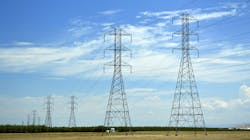A Big Step Forward on Transmission Infrastructure
Planning, siting, permitting, financing and building transmission infrastructure is a complex, time-consuming and difficult process. Congress, the Federal Energy Regulatory Commission, state legislators and bulk electric system operators like the California ISO have been working to identify new and more efficient ways to make sure we have the transmission infrastructure required to move power.
The need for additional transmission capacity in California is particularly critical. As noted in the CAISO’s 20-Year Transmission Outlook published in 2022, the state will require as much as 120 GW of new clean energy resources to meet the decarbonization goals of Senate Bill 100 by 2040. The vast majority of those new resources are expected to come from within California and from offshore wind. But, consistent with the California Public Utilities Commission’s “Preferred System Plan” and the California Energy Commission’s “starting point” scenario for achieving state decarbonization objectives, both agencies anticipate meeting a portion of California’s clean energy needs from out-of-state resources that will require additional transmission capacity.
Now, with approval by the CAISO Board of Governors of our new Subscriber Participating Transmission Owner model for development of generation and transmission from outside the CAISO balancing area, we believe a big step forward has been taken regarding transmission infrastructure in California and the West. We are also confident this new model, which will facilitate delivery of critically needed resources to the CAISO grid, can be used more broadly in the West on future projects so everyone can save time and money in getting new transmission projects up and running.
The Subscriber PTO model can enable new transmission lines outside the CAISO balancing area for developers wanting to build and place their transmission facility or facilities under CAISO operational control and use those transmission facilities to connect generation to the CAISO grid. The transmission project to connect such generation, financed subscriber or transmission owner, would be outside the revenue requirement of the CAISO’s transmission access charge.
The process that resulted in the approval by the CAISO Board began more than a year ago when we started discussing the concept and issues with developers of the proposed Trans-West Express (TWE) transmission project. In June of 2022, following up on those initial conversations and consistent with section 4.3.1.1 of the Transmission Control Agreement, we received TWE’s application to become a Participating Transmission Owner in the ISO balancing authority area.
TWE’s plans call for building a 732-mile combined HVDC and AC transmission line that has the potential to bring up to 3,000 MW of Wyoming wind power into California and other states in the desert Southwest as early as 2027. The line splits at the end of the HVDC portion in Utah, allowing 1,500 MW to go to the Los Angeles Department of Water and Power, while the remaining 1,500 MW can serve the CAISO and NV Energy.
Costs for the $3 billion project will be recovered through TWE tariffs from subscribers using the transmission lines to move power and would not affect the CAISO’s transmission access charge. The subscriber rights would pay for the generation, transmission, and congestion on the portion of the line used by the subscriber.
This model is the first that enables development of out-of-state generation to be provided using the subscriber approach. The subscriber model also allows development of out-of-state renewable generation identified in the CPUC’s Final Decision Ordering Supplemental Mid-Term Reliability Procurement, the CPUC resource portfolios used in the CAISO’s 2023-2024 transmission planning process, and the new transmission facilities required to reach identified resource locations. These portfolios call for out-of-state wind generation that requires new transmission to reach the CAISO border: 1,000 MW from Idaho, 1,500 MW from Wyoming, and 2,328 MW from New Mexico. These volumes build on the amounts provided as part of the CAISO’s 2022-2023 transmission planning. They also match the values that the ISO used to size transmission needed from the CAISO border to load centers in the 2022-2023 plan and they align with the longer-term requirements set out in the scenario provided by the CEC and the CPUC to the CAISO for the CAISO’s 20-Year Transmission Outlook.
A ceremonial groundbreaking for the transmission line, which has been in planning and development for some 20 years, took place in Wyoming in June. If successful in securing subscribers for the generation, TransWest Express plans to energize in 2027. Adding more wind power to our grid would also help bolster reliability, as demand for electricity is projected to grow in the coming years through increased electrification of the transportation and building industries, and as California continues adding more renewable energy to the grid.
Transmission planning is a core function of the CAISO. As part of that work, we actively engage stakeholders and the public in determining short and long-term infrastructure needs. Once the needs are identified by Regional Planning and Grid Assets, Infrastructure Contracts & Management, where I serve as director, picks up the reins to get the contracts executed, resources online, and managed to ensure the resources and transmission are available for consumers.
The process is robust and challenging, but it is also gratifying when we emerge with a creative solution, a viable project and a sound, efficient way of getting it financed. At the CAISO, we will continue to do all we can to make sure California has the infrastructure needed to operate a reliable, safe and cost-effective power system and look forward to more creative solutions.
Deb Le Vine is Director, Infrastructure Contracts & Management, at California ISO.
About the Author
Deb Le Vine
Deb Le Vine is Director, Infrastructure Contracts & Management, at California ISO.
